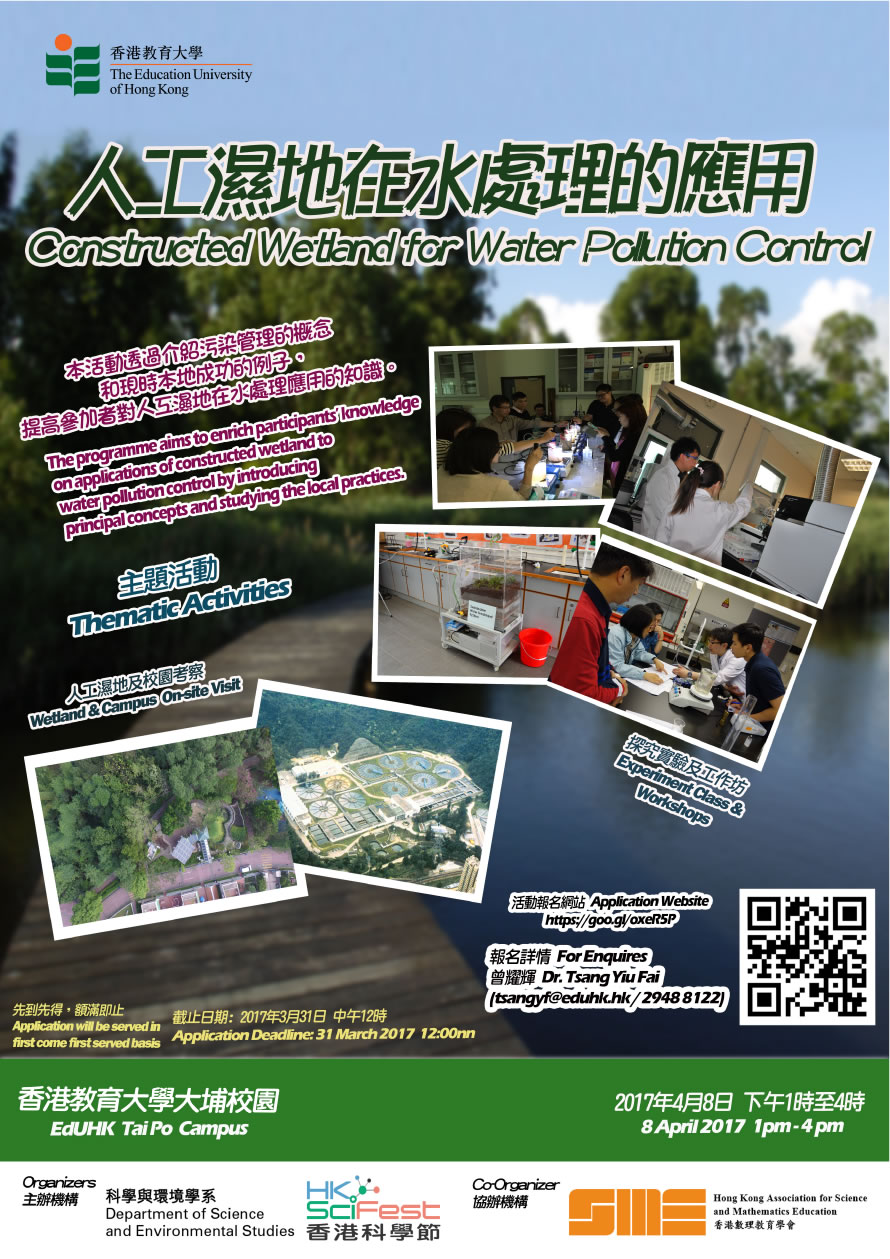

|
|
|
|
|
|
|
|
|
Research/RAE > Research Projects
 |
Prof. WONG Ming Hung - Field Study on Constructed Wetland in Removing Pollutants from Combined Village Sewage
Chief Investigator:
Prof. WONG Ming Hung
Co-Investigator(s):
CHOW Ka Lai *
LEUNG Anna Oi-Wai *
Dr MAN, Yu Bon 文裕邦
Project Year:
2014-2017
Description:
The construction of River Channels at Ta Kwu Ling of Ping Yuen River was completed in April 2006, aiming at improving the flow capacity of the river, to alleviating local flooding of the areas, during the wet seasons (DSD, 2007). In order to improve the visual impact and maintain habitat for wildlife, the channel embankments were generally covered by reinforced grass and/or perforated precast concrete base (i.e. grasscrete). Other environmental friendly features included aquatic planting bays along and adjacent to certain dry-weather flow channels, for maintaining a natural appearance. The geotextile mat was used to enhance the erosion resistance, by providing effective anchor to the root systems of grasses, forming a composite soil/root mat. Detailed instructions with regards to maintenance and repair of various facilities including those which serve as support for plants, such as the geotextile mat for reinforced grass system, aquatic planting bays and associated gabion walls, and pond features, were provided (DSD, 2007). Constructed wetlands are effective in purifying contaminants in wastewater which include domestic wastewater (with high biological oxygen demands and nutrient contents such as nitrogen and phosphorus), as well as industrial wastes (dominated by heavy metals and other toxic chemical compounds, such as pesticides and phenols, pending on the type of industries). There seems to be a need to conduct this proposed project, as some of the vegetation originally planted at the site, were not able to survive, and part of the areas have been taken over by some undesirable plant species. The major objectives of this investigation are to (1) use wetland plants for purifying wastewater, stabilizing the embankment as well as improving the scenic value of the site; (2) create habitats using different wetland species suitable for a wide range of biological organisms, such as dragonflies, snails, fish, etc); and (3) raise environmental awareness concerning ecological balance and biological conservation for school students as well as the general to use the sites as open-air classrooms.




